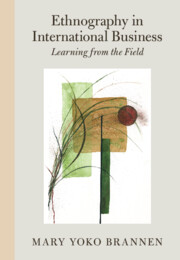Refine search
Actions for selected content:
325 results
2 - Theory of Exit and How to Study Exit
-
- Book:
- Death, Diversion, and Departure
- Published online:
- 19 December 2025
- Print publication:
- 22 January 2026, pp 33-73
-
- Chapter
- Export citation
5 - Rural Return
-
- Book:
- Homesick Nation
- Published online:
- 20 November 2025
- Print publication:
- 18 December 2025, pp 125-155
-
- Chapter
- Export citation
6 - ‘Back Down to the Countryside’
-
- Book:
- Homesick Nation
- Published online:
- 20 November 2025
- Print publication:
- 18 December 2025, pp 156-194
-
- Chapter
- Export citation
Epilogue
-
- Book:
- Homesick Nation
- Published online:
- 20 November 2025
- Print publication:
- 18 December 2025, pp 212-221
-
- Chapter
- Export citation
Reading children’s moral dramas in anthropological fieldnotes: A human–AI hybrid approach
- Part of
-
- Journal:
- Cambridge Forum on AI: Culture and Society / Volume 1 / 2025
- Published online by Cambridge University Press:
- 10 December 2025, e6
-
- Article
-
- You have access
- Open access
- HTML
- Export citation
Genetics, Diet or Divine Blessing? Local and Scientific Explanations for High Dizygotic Twinning in Igbo-Ora, Nigeria
-
- Journal:
- Twin Research and Human Genetics , First View
- Published online by Cambridge University Press:
- 27 November 2025, pp. 1-6
-
- Article
-
- You have access
- Open access
- HTML
- Export citation
Cross-Functional Coordination, Status–Authority Asymmetry, and Contingent Exploitation of Digital Technology
-
- Journal:
- Management and Organization Review , First View
- Published online by Cambridge University Press:
- 14 November 2025, pp. 1-25
-
- Article
- Export citation

Shapes in Revolution
- The Political Morphology of Cuban Life
-
- Published online:
- 07 November 2025
- Print publication:
- 20 November 2025
L’apport de l’ethnographie dans la recherche sur la conscience du droit : l’exemple d’une étude sur la religion des patients
-
- Journal:
- Canadian Journal of Law & Society / La Revue Canadienne Droit et Société , First View
- Published online by Cambridge University Press:
- 03 November 2025, pp. 1-18
-
- Article
-
- You have access
- Open access
- HTML
- Export citation
3 - A Biography of Law
- from Part II - In the Court of Law
-
- Book:
- Moral Autopsy
- Published online:
- 18 November 2025
- Print publication:
- 30 October 2025, pp 135-161
-
- Chapter
- Export citation
Introduction - Moral Autopsy after Communism
-
- Book:
- Moral Autopsy
- Published online:
- 18 November 2025
- Print publication:
- 30 October 2025, pp 1-54
-
- Chapter
- Export citation
From whoring the knowledge to whoring the law: co-creating activism within a sex workers’ collective
-
- Journal:
- International Journal of Law in Context / Volume 21 / Issue 4 / December 2025
- Published online by Cambridge University Press:
- 29 October 2025, pp. 576-587
-
- Article
-
- You have access
- Open access
- HTML
- Export citation
Chapter 5 - Phantasmagorical Terrain
-
- Book:
- American Modernism and the Cartographic Imagination
- Published online:
- 09 October 2025
- Print publication:
- 23 October 2025, pp 183-222
-
- Chapter
- Export citation
A Thing that Works: A Case Study of Success at the Urban Margins
-
- Journal:
- Journal of Latin American Studies , First View
- Published online by Cambridge University Press:
- 22 October 2025, pp. 1-25
-
- Article
-
- You have access
- Open access
- HTML
- Export citation

Ethnography in International Business
- Learning from the Field
-
- Published online:
- 21 October 2025
- Print publication:
- 09 October 2025
23 - Categorizing Music, Classifying People: Music Research and Race Studies in the Czech Lands
- from Part III - The Twentieth Century and Beyond
-
-
- Book:
- A History of Music in the Czech Lands
- Published online:
- 21 October 2025
- Print publication:
- 16 October 2025, pp 324-334
-
- Chapter
- Export citation
21 - Liturgy as Ritual (and Prayer)
- from Part V - The Study of Liturgy
-
-
- Book:
- The Cambridge Companion to Christian Liturgy
- Published online:
- 19 September 2025
- Print publication:
- 09 October 2025, pp 369-388
-
- Chapter
- Export citation
Part I - Intracultural Ethnography
-
- Book:
- Ethnography in International Business
- Published online:
- 21 October 2025
- Print publication:
- 09 October 2025, pp 27-124
-
- Chapter
- Export citation
Introduction
-
- Book:
- Ethnography in International Business
- Published online:
- 21 October 2025
- Print publication:
- 09 October 2025, pp 1-26
-
- Chapter
-
- You have access
- HTML
- Export citation
1 - Theorizing Regionally Dominant Political and Moral Economies as Causes of Deforestation
- from Part I - Introduction
-
- Book:
- Clearcut
- Published online:
- 03 October 2025
- Print publication:
- 02 October 2025, pp 3-30
-
- Chapter
-
- You have access
- Open access
- HTML
- Export citation
